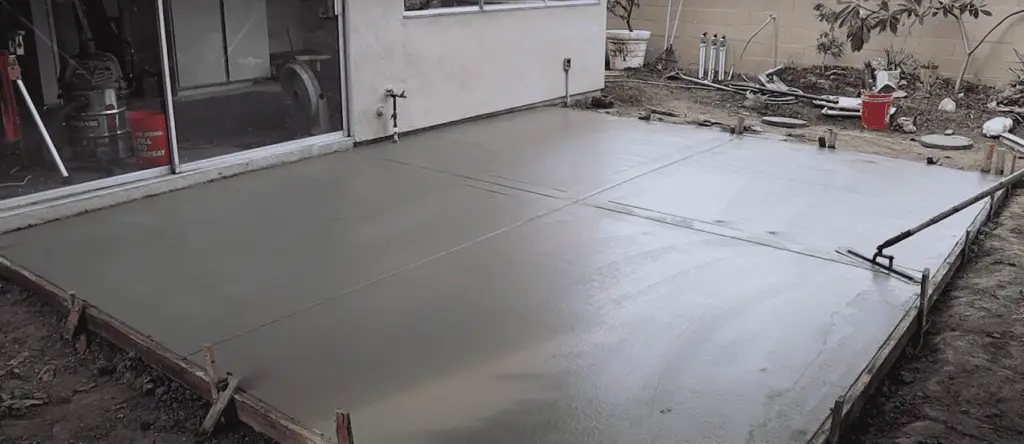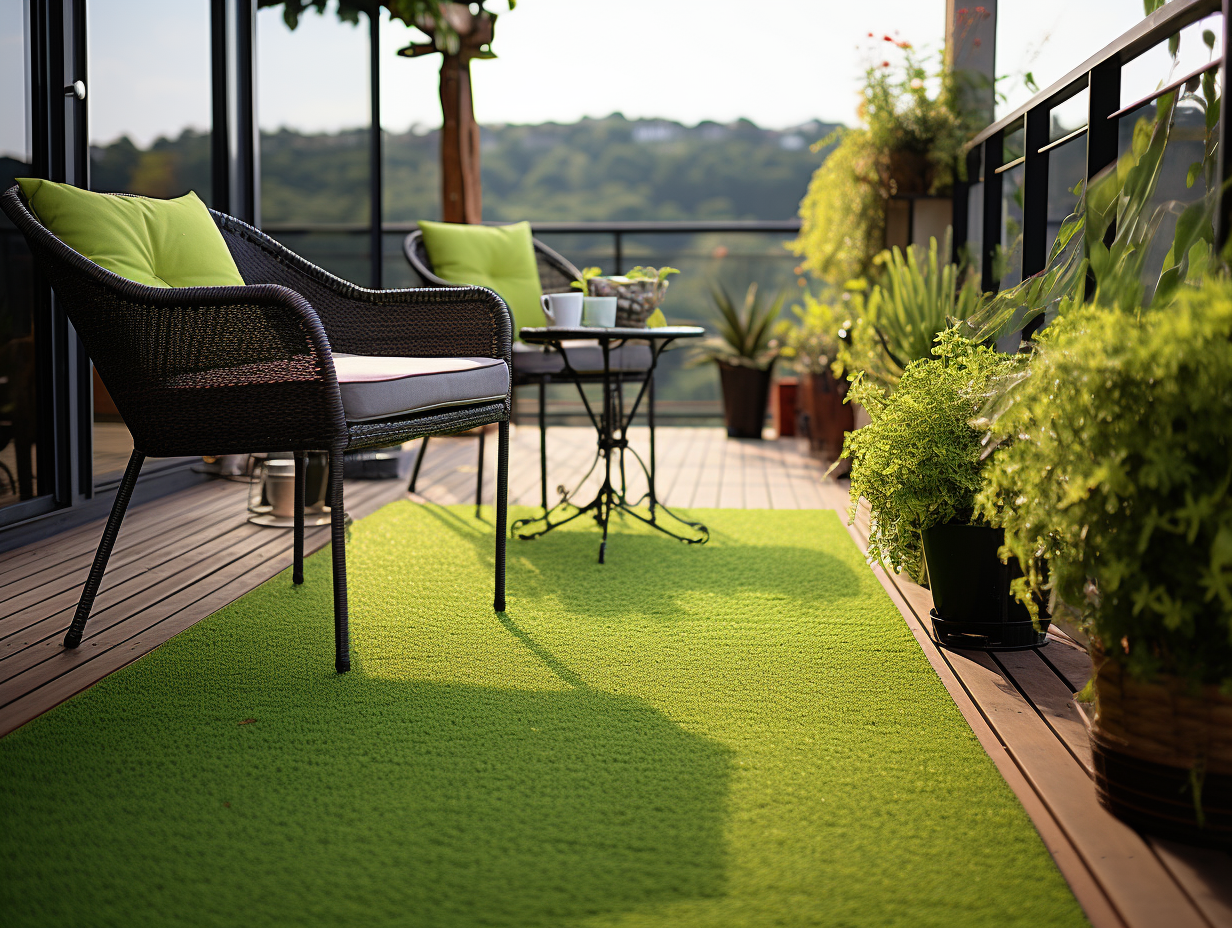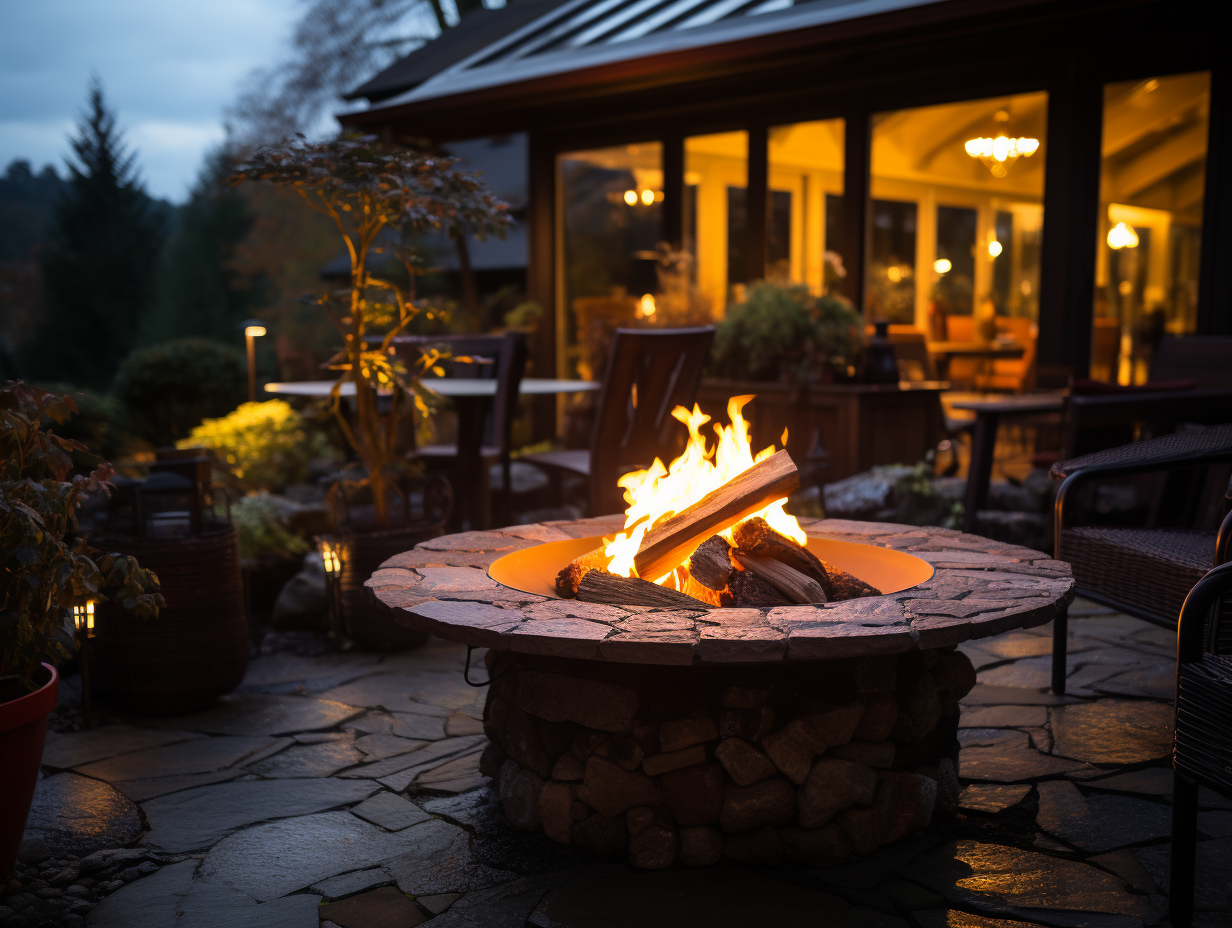If you have a brick pr paver patio you may want to switch the bricks out for another type of outdoor flooring.
It is difficult to change the appearance of a brick paver patio without removing all of the bricks and placing them in a different pattern or laying new bricks entirely. However, there is an alternative to such a high-labor job.
It isn’t always easy to find replacement bricks if yours are broken or severely damaged, so this article will discuss some options for covering your brick patio with cement, including an easy solution for making DIY pavers.
I have included a Cement Mix Calculator and How many bags of concrete you will need calculator.

How to Cover a Brick Paver Patio With Cement
Using cement-based concrete to cover bricks on a patio allows you to create an attractive new patio surface without having to remove the bricks below.
Pouring the new surface over and around the bricks completely conceals the old surface, saving time and money on brick removal and pouring a full slab.
Here’s how to do it:
Tools You Will Need
| Power washer | Concrete mixer |
| Wooden planks | Spade |
| Hammer | Screed board |
| Nails | Wood float |
| Exterior epoxy primer | Trowel |
| Paint roller | Concrete sealant spray |
| Concrete mix |
1. Choosing Design
Once you have decided to cover your brick patio with cement, it is time to decide how you would like it to look. Some people choose to line their entire patio with cement, while others prefer only lining the border and leaving the center open.
You can also add color or texture by mixing in dyed gravel or sand when pouring your cement mixture.
Read More: [DIY] Building Your Own Concrete Patio Floor
2. Cleaning The Surface
You can clean bricks through a power washer if there is any dirt or debris on them. Start with a low setting and work your way up to a higher setting in an unobtrusive corner of the brick patio until the water begins to etch the bricks.
Turn the water stream back a little at this point and wash the patio from the entry of your home to the edge, allowing the bricks and grass to dry before continuing.
3. Build A Frame
Build a wooden form surrounding the patio, not higher than the threshold of any entry leading to it. The form should extend up to two inches above the surface of the patio and two inches from the edge.
The frame is constructed of wooden planks that are nailed together at the joints, with the edge of the home serving as the fourth wall. Place the frame around the patio, and secure it in place with stakes driven into the ground around the frame.
4. Seal The Bricks
By using a paint roller, apply a thin layer of exterior epoxy primer to the bricks. This will seal the bricks, preventing moisture from absorbing through the cement covering. Allow the primer to dry for four hours.
5. Mix Cement
In a cement mixer or you can mix it manually, pour a batch of cement-based concrete, add enough water to make it pourable, then add the dry concrete mix. Blend until the concrete is smooth and lump-free.
6. Pour The Concrete
Fill the form surrounding the brick surfaces with concrete and pour it over the brick patio. Spread the mixture evenly over the bricks using a spade.
Read More: Free Concrete Slab + Bags Needed Calculator
It is recommended that the concrete slap over patio bricks be 2 to 4 inches thick.
PRO TIP: Use A Concrete Stamp To Decorate The Concrete. You Can Find Some Here
7. Level The Concrete
Using a screed board, level the concrete covering the brick patio. Move the screed board in a sawing motion on the concrete surface to fill in any high spots in the concrete with any materials sitting on top of the form.
8. Smooth It Out
Use a wood float to smooth the concrete surface further and to bring a bit of moisture to the top. Wait for the moisture to be absorbed back into the concrete and then cut control joints every eight feet with a trowel’s edge and about 1-inch deep in the concrete.
This will allow for expansion when the concrete dries and settles.
9. Cover The Concrete
Use a plastic sheet to cover your newly poured concrete. For the first two days, remove the plastic sheet once a day and mist it with water the concrete to prevent premature drying.
Allow the concrete to cure for seven days, misting the surface with water once a day.
10. Seal It
After removing the forms, let the concrete cure for 13 more days, spray with concrete sealer, then wait another 72 hours before using the new concrete patio.
How Much Concrete Do I Need To Cover My Brick Patio?
To determine how much concrete you will need you first have to decide if your patio is tiled or patterned brick. If the bricks are tiled they should be measured as one whole area.
If the brick is patterned then it should be measured per square foot of space that includes both sides and the line between them where there is no brick.
Concrete Bags Needed To Cover A Brick Patio
The calculation is for 50 LBS concrete bags
| Patio Size | 4″ Slab | 6″ Slab | Cost |
|---|---|---|---|
| 10 Square Feet | 9 x 50 lbs | 14 x 50 lbs | $54 – $84 |
| 15 Square Feet | 14 x 50 lbs | 20 x 50 lbs | $84 – $120 |
| 20 Square Feet | 18 x 50 lbs | 27 x 50 lbs | $108 – $162 |
| 25 Square Feet | 23 x 50 lbs | 34 x 50 lbs | $138 – $204 |
| 30 Square Feet | 27 x 50 lbs | 40 x 50 lbs | $162 – $240 |
Cement Mix Calculator
Concrete mix design is a crucial and integral part of any successful concrete project. Durability and workability are directly related to having the correct ratio of ingredients in your concrete mix.
The Concrete Mix Calculator on this page is an easy way to calculate the correct proportions for your next large or small concrete project, be it sidewalks, building foundations, driveways, or anything else.
Can You Pour Concrete Over A Brick Patio?
This is an interesting question that many homeowners have. If you are looking for new construction ideas, then this blog could provide useful information for your home. The short answer to the above question is Yes, it can be done.
Whether or not you should do it is up to you and your contractor.
Read More: [Surprising] The Cheapest Way To Build a Patio
There are two options when concrete is used as part of a renovation or addition project. You can remove the bricks before pouring the concrete, or leave the bricks in place and pour around them. While both options work well, here are some things you should understand about each method before making a decision on which one to use:
1) Considering cost – Removing the bricks will mean you have to purchase a lot of new concrete. The cost will depend on the size of the patio but expect it to be six times more than if you can leave them in place.
2) Considering how much time you have – If your goal is to pour concrete for a patio as soon as possible, then removing the bricks from the area may be necessary.
However, for a weekend project or something that won’t take a long time, leaving them in place might work better for your needs.
3) Considering the ease of removal – If you plan on removing bricks from an old patio yourself, make sure they are not mortared together tightly because this will make it hard to remove them without damaging them further.
You should also consider any mortar joints that may be in the patio area where you want to pour concrete.
4) Considering how well it will drain – For patios with drainage problems, leaving the bricks intact and pouring over them is a good option because they will allow water to run through via small gaps between the bricks.
If you do not like this idea, then consider laying sand beneath your new concrete or using an underdrain system (this solution can get expensive fast).
5) Considering what type of surface you want – If you don’t mind doing some patching and smoothing on top of your existing brick patio, then leaving them in place may result in a nicer finished product than if you had removed the bricks and poured directly over them (especially if they are mortared tightly together).
6) Considering the type of bricks – If your existing patio is made from fired clay or something low quality that you don’t mind replacing, then it may make more sense to pour right over them for a cheaper option.
However, if they are stone or brick and you want them protected, then leaving them in place will guarantee they remain safe until the new concrete cures completely (which can take several weeks).
7) Considering visual appeal – Even though removing and replacing bricks vs. pouring directly over them involves two different installation processes, they result in very similar finished products when it comes to appearance.
Most people cannot tell whether old bricks were removed and replaced with new ones or left alone. For this reason, we suggest focusing more on the price and ease of removal when making a final decision.
Conclusion
Brick patios are a great way to add an old-world charm and beauty to any outdoor living space.
However, they can be expensive and time consuming when it comes to upkeep. If you’re looking for a less costly option on your patio design project but still want the same look of brick without all of the hassles, consider covering your current concrete with cement instead!
Cement is durable and lasts much longer than regular asphalt or dirt so this may be worth considering if you plan on staying in that home long enough.


![What Gravel To Use For Patio Base [Best Options]](https://www.cleverpatio.com/wp-content/uploads/2021/11/What-Gravel-To-Use-For-Patio-Base-270x180.jpg)


Leave a Reply